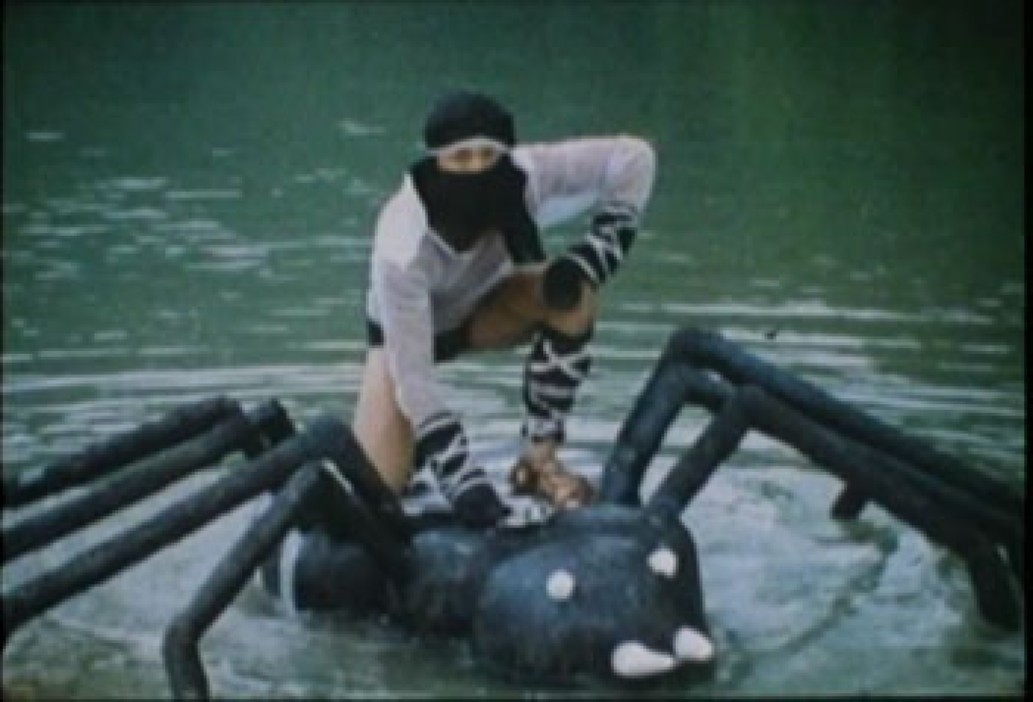I’m not going to lie, there’s some seriously stupid techniques in many, probably all, martial arts styles. My fellow martial artists and I have joked about techniques in our arts that we just can’t take seriously. From the Three Stooges eye poke defense in Taekwondo where you bring up a knife hand formation between your eyes to an Okinawan weapon art in which you circle the tip of a Sai over your head as if to give a giant a prostate exam, there is some hilarious techniques to make fun of. Completely useless, right? But are they really useless?
Many of my students have heard me state this, but the story bears repeating. Numerous years ago while adjusting my Hapkido program, I had removed a number of techniques I felt were useless. Primarily wrist locks. One wrist lock in particular, while I really enjoyed performing it, seemed ridiculous. It involves an attacker grabbing your wrist from in front of you. You then turn your back to the opponent and spin around while placing your hands behind your back to grab their wrist. You then continue the spin to create a wrist lock to take the opponent down. If you are a martial artist and are envisioning this, you’re immediately tearing this technique apart. Turning your back to an opponent – terrible idea. Placing both of your hands behind your back while doing so – even worse. Knowing you could have performed this same wrist lock while still facing them – ridiculous. Clearly, this was a useless technique
and I crossed it off the list.
Flash forward a few weeks while sparring with some students. We were doing some ground fighting, which involves heavy grappling while on the ground from numerous different positions that one must be prepared for. My student had my back. This is a bad position to be in! He was also holding my wrist behind my back. With no thought at all, my years of practicing a useless behind the back wrist lock was launched into action. I knew exactly how his hand was position based on training that technique and I quickly applied a wrist lock to the student and reverse the position. This technique wasn’t so useless after all.
It’s important to not get too caught up in the situation that some of your techniques are applied to. We must focus more on the skill being taught through the technique. I removed that behind the back wrist lock as all I had focused on was the situation it was presented through. A wrist grab from front. I missed the fact that the technique was actually teaching me how to feel my way through a wrist lock without the use of my eyes. Yes, it could have been presented through a different situation other than a wrist grab, but that would then force a new set of situations to be developed or left alone as a weird standalone technique, which would make it harder to memorize for the student.
If you’re not a Hapkido practitioners, that might sound confusing. The best I can explain it is that techniques are learned in situational blocks. It’s a more efficient way to learn than learning random situations. The thought is very similar to the “magical number seven” theory that we can only learn seven numbers at a time. Each rank in Hapkido could have thirty new techniques to learn. So they are set up in clusters of the same attack to make it easier to learn. Hence, why we do the behind the back wrist lock from a wrist grab rather than a standalone situation.
It’s just easier to learn in this block. We never have more than seven techniques in each situation block per rank for this same reason. Learning five blocks of five techniques each, is much easier on the brain than trying to memorize twenty five random techniques. Once the techniques are learned, then the student can simply apply them to any situation that fits. It’s truly a brilliant system!
This thought of a technique being useless is very short sighted. Most martial arts styles that make use of forms (aka kata or poomse), have seemingly weird techniques and movements that seem strange until you understand what they are used for. Many times these techniques represent grabs or throws potentially and without it being applied to an actual person can make it seem strange. Practitioners must understand the point of a technique, detail, and application before passing judgement on it.
Understand that one of the biggest goals in martial arts is to obtain body control, learn what natural weapons you have to use at your disposal (knuckles, knees, ball of the foot, etc.), and to learn vital points on the body (weak points on the body). Some of your martial arts techniques are very obvious as to how they are useful. Others, however, may be harder to figure out their usefulness. Hopefully your instructor understands the techniques and can help guide you on its purpose. As I tell my students, your forms are training your self-defense motions, not always a direct application, but targeting muscle groups or motions that are important.
Another example of this is what is known as the Mountain Block in Taekwondo. I’ve jokingly dubbed it the “crab walk technique” as it resembles a crab in its end position. Feet wide apart, knees strongly bent, arms out to your side with elbows bent and fists pointed up. It looks weird. Yet, the motion behind it is very useful as it targets the hips and core quickly torqueing to generate power. This motion can be used in throws, armbar takedowns, and leg trips just to name a few. It looks weird, but quite useful!
Does this mean all techniques in all of the numerous martial arts styles are useful? Highly unlikely. I don’t know all of the martial arts styles and techniques, but I’m certain there are some movements that could be removed without issue. However, when I hear someone state that a technique is useless in a real situation, they are many times referring to a technique they have never truly learned. It’s the ignorance behind the statement that I take issue with, not the fact that every technique is useful. There is just too many elements at play when it comes to self-defense to state definitively that a technique isn’t useful in a real situation.
Another thing to keep in mind is the passing down of techniques from teacher to student. While some arts were created in recent times when you could easily write down the system and not have much confusion over techniques, many systems were simply passed down person to person. In some cases it was banned to write down these techniques and it needed to be done in secrecy. Such as the occupation of Okinawa where Japan banned all martial arts practice and weapons. Hence why they developed systems based on fishing and farming tools as wells as open hand techniques. Due to situations such as this, many techniques could have been lost or misinterpreted by the student. This student, in turn, taught the misinterpreted technique to their students.
As usual, it’s rarely the technique that’s the issue, it’s usually the instructor or the student that just doesn’t understand the technique enough to apply it properly. With that said, not all techniques are one hundred percent equal. Some techniques are used much more often than others and the training of these techniques should reflect that. When it comes to self-defense, I suggest placing a little more effort in your punch than your backflip kicks!







Leave A Comment